new posts in all blogs
Viewing: Blog Posts Tagged with: Atheneum, Most Recent at Top [Help]
Results 1 - 25 of 26
How to use this Page
You are viewing the most recent posts tagged with the words: Atheneum in the JacketFlap blog reader. What is a tag? Think of a tag as a keyword or category label. Tags can both help you find posts on JacketFlap.com as well as provide an easy way for you to "remember" and classify posts for later recall. Try adding a tag yourself by clicking "Add a tag" below a post's header. Scroll down through the list of Recent Posts in the left column and click on a post title that sounds interesting. You can view all posts from a specific blog by clicking the Blog name in the right column, or you can click a 'More Posts from this Blog' link in any individual post.

By:
Betsy Bird,
on 8/10/2016
Blog:
A Fuse #8 Production
(
Login to Add to MyJacketFlap)
JacketFlap tags:
Reviews,
middle grade fiction,
Simon and Schuster,
Atheneum,
Best Books,
middle grade realistic fiction,
Jason Reynolds,
Best Books of 2016,
2016 reviews,
Reviews 2016,
2016 middle grade fiction,
2016 realistic fiction,
diverse fiction,
Add a tag
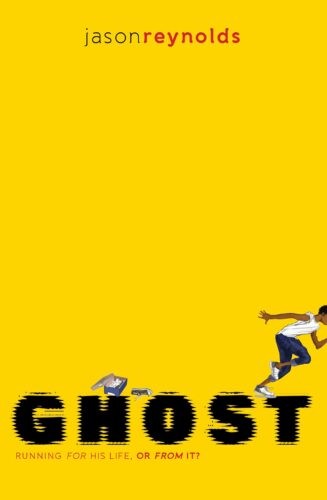 Ghost
Ghost
By Jason Reynolds
Atheneum (an imprint of Simon & Schuster)
$16.99
ISBN: 978-1-4814-5015-7
Ages 9-12
On shelves August 30th
This is a generalization, but in my experience librarians really enjoy reading within their comfort zones. They’ll travel outside of them from time to time but always they return to the books that they like the most. Children’s librarians are just the same. The fantasy readers stick to fantasy. The realism fans go with realism. Graphic novel readers with comics. When I served on a yearly committee of librarians in New York I’d notice that some books were difficult to get anyone to read. Horse books, for example, just sat on our shelves untouched. Nonfiction could take some prodding. And as for sports books . . . forget about it. Nobody ever got near them. Still, you can’t give up on them. Mike Lupica and Tim Green may rule the field but that doesn’t mean other people don’t make a lot out of athletics. If our Newbery winning The Crossover by Kwame Alexander taught us anything, it was that. Now Jason Reynolds, a young adult author until this year, has produced a middle grade novel centered on that must unlikely of sports: track. It skirts the clichés. It dodges the usual pitfalls. It makes you care about a kid who keeps messing up over and over and over again. It’ll make you like sports books, even if you can’t generally stand them. And now we’ve got to find a way to get a lot of it into the hands of kids. Stat.
Call him Ghost. You can call him Castle Crenshaw if you want to (that’s technically his name) but he’s been calling himself Ghost ever since the night his dad got drunk and threatened Castle and his mom with a gun. Ghost learned to run that night and you might say he’s been running ever since. He’s got a load of anger inside that he doesn’t know how to deal with so he tends to take it out on others at school. Then one day he spots a track warm-up and takes an instant dislike to the albino kid in the expensive tracksuit. Without thinking about it twice Ghost beats the guy on the track, running on the outside, which gets the attention of the coach. Coach begs Ghost to join and Ghost reluctantly agrees but it isn’t what he expected. The other kids there all have their own lives, few of them easy. The running is much harder than anything Ghost has ever experienced before. And then there’s the fact that no matter how fast he is, Ghost can’t run away from trouble. It follows him and if he’s not careful it’s going to follow him right onto the track.
Baseball. Basketball. Even football. These are the sports of fiction. I doubt anyone has ever run any statistics on it, but if you were to gather together all the children’s sports books and group them by type, the baseball books would undoubtedly outweigh all the others 2:1. That’s because baseball is a game with a natural rise and fall to its action. Basketball has speed and football has brute force, all good things when writing a story. Track? In track you run and then you stop. At least that’s how I always looked at it. For Jason Reynolds, though, it’s different. He didn’t write this book with track as a single focus. He looks at what the sport boils down to. Basically, this is a book about running. Running from mistakes (forgive the cliché), from very real threats, for your life, and for your team. Why you run and where you run and how you run. And if that’s where you’re coming from, then track is a very good choice of a sport indeed.
On paper, this book looks like it’s the sort of story that’s all been done before. That’s where Reynolds’ writing comes in to play. First off, it’s worth noticing that Mr. Reynolds is blessed with a keen sense of humor. This comes to play not just in the text but also in little in-jokes here and there. Like the fact that one of the runners (that, I should mention, gets cut later in the book because his grades are slipping) is named Chris Myers. Christopher Myers is the son of Walter Dean Myers, and a friend to Jason Reynolds. I love Jason’s descriptions too. Mr. Charles at the corner store, “looks just like James Brown if James Brown were white. . .” Or Ghost saying later, “… for something to make you feel tough, you gotta be a little bit scared of it at first.” There are some pretty fantastic callbacks hidden in the story as well. Right at the start, almost like it’s some kind of superhero origin story, we hear how Ghost heard the gun go off that night he ran away from his home with his mom and “I felt like the loud shot made my legs move even faster.” That ties in beautifully with the starter pistol that goes off at the very very end of the book.
But maybe what I like the most about Jason Reynolds’ books is that he applies this keen sense of the complexity to his characters. I don’t think the man could write a straight one-dimensional villain to save his soul. Even his worst characters have these brief moments of humanity to them. In this case, Ghost’s dad is the worst character. You don’t get much worse than shooting at your wife and kid after all. Yet for all that, Ghost still can’t help but love the guy and eats sunflower seeds in his memory. Each character in the book has layers that you can peel away as the story progresses. Even Ghost, ESPECIALLY Ghost, who makes you want to yell and him and cheer for him, sometimes at the same time.
There’s been a monumental push for increased diversity in children’s literature in the last few years. Diversity can mean any number of things and it often focuses on race. In a weird way, increasing the number of racially diverse books on a given publisher’s release calendar isn’t hard if the publisher is dedicated to the notion. Far more difficult is figuring out how you increase the economic diversity. Middle grade characters are almost always middle class. If they’re working class then they tend to be historical. Contemporary lower income kids in realistic novels are almost unheard of. For example, how many books for children have you ever read with kids living in shelters? I’ve read just one, and I’m a children’s librarian. So I watched what Reynolds did here with great interest. Ghost isn’t destitute or anything but his single mom makes ends meet by working long hours at a hospital. Middle class kids are remarkably good at ignoring their own privilege while kids like Ghost become almost invisible. In the book, Ghost’s decision to initially race Lu isn’t solely based on how Lu struts around the track, thinking he’s the bee’s knees. It’s also on his clothes. “…Lu, was decked out in the flyest gear. Fresh Nike running shoes, and a full-body skintight suit . . . He wore a headband and a gold chain around his neck, and a diamond glinted in each ear.” Later Ghost makes a decision regarding a particularly fancy pair of running shoes. That’s an economic decision as well. Those are the most obvious examples, but the book is full of little mentions, peppered throughout, of where Ghost’s class comes in to things. It’s nice to see an author who gets that. We are often affected by forces outside our control, forces we don’t even necessarily notice, particularly when we’re children. If young readers see it, they’ll be reading between the lines, just like Reynolds wants them to.
Right at the beginning of the book, when Coach is trying to convince Ghost’s mom that he should be running, Ghost realizes that he’s in a situation that’s played out in loads of sports films. He thinks, “If this went like the movies, I was either going to score the game-winning touchdown (which is impossible in track) or . . . die.” Sometimes you can gauge how good a book is by how self-aware its characters are. But sometimes you just read a book, put it down, and think, “Man. That was good. That was really good.” This is a book that actually made me tear up, and there aren’t a lot of middle grade books that do that. I was rooting for Ghost hard, right until the end. I was caring about a sport that I’d never otherwise think about in a million years. And I was admiring it from start to finish for all that it accomplishes in its scant 180 pages. This is the book you hand to the kids who want something real and good and honest. There are a lot of Ghosts out there in the world. Hopefully some of them will discover themselves here. Run, don’t walk, to pick this book up.
On shelves August 30th.
Source: Galley sent from publisher for review.
Like This? Then Try:


By:
Betsy Bird,
on 6/29/2016
Blog:
A Fuse #8 Production
(
Login to Add to MyJacketFlap)
JacketFlap tags:
picture book poetry,
African-American authors and illustrators,
Best Books of 2016,
2016 reviews,
Reviews 2016,
2016 poetry,
Reviews,
history,
poetry,
Simon and Schuster,
Atheneum,
Best Books,
Ashley Bryan,
multicultural children's literature,
African-American history,
Add a tag
 Freedom Over Me: Eleven slaves, their lives and dreams brought to life
Freedom Over Me: Eleven slaves, their lives and dreams brought to life
By Ashley Bryan
Atheneum (an imprint of Simon & Schuster)
$17.99
ISBN: 978-1481456906
Ages 9 and up
On shelves September 13th
Who gives voice to the voiceless? What are your credentials when you do so? When I was a teen I used to go into antique stores and buy old family photographs from the turn of the century. It still seems odd to me that this is allowed. I’d find the people who looked the most interesting, like they had a story to tell, and I’d take them home with me. Then I’d write something about their story, though mostly I just liked to look at them. There is a strange comfort in looking at the faces of the fashionable dead. A little twinge of momento mori mixed with the knowledge that you yourself are young (possibly) and alive (probably). It’s easy to hypothesize about a life when you can see that person’s face and watch them in their middle class Sunday best. It is far more difficult when you have no face, a hint of a name, and/or maybe just an age. Add to this the idea that the people in question lived through a man made hell-on-earth. When author/illustrator/artist Ashley Bryan acquired a collection of slave-related documents from the 1820s to the 1860s he had in his hands a wealth of untold stories. And when he chose to give these people, swallowed by history, lives and dignity and peace, he did so as only he could. With the light and laughter and beauty that only he could find in the depths of uncommon pain. Freedom Over Me is a work of bravery and sense. A way of dealing with the unimaginable, allowing kids an understanding that there is a brain, heart, and soul behind every body, alive or dead, in human history.
The date on the Fairchilds Appraisement is July 5, 1828. On it you will find a list of goods to be sold. Cows, hogs, cotton . . . and people. Eleven people, if we’re going to be precise (and we are). Most have names. One does not. Just names on a piece of paper almost 200-years-old. So Ashley Bryan, he takes those names and those people, and for the first time in centuries we get to meet them. Here is Athelia, a laundress who once carried the name Adero. On one page we hear about her life. On the next, her dreams. She remembers the village she grew up in, the stories, and the songs. And she is not alone in this. As we meet each person and learn what they do, we get a glimpse into their dreams. We hear their hopes. We wonder about their lives. We see them draw strength from one another. And in the end? The sale page sits there. The final words: “Administered to the best of our Judgment.”
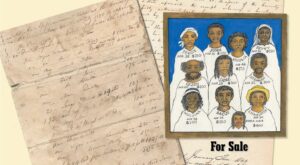 I have often said, and I say it to this day, that if there were ever a Church of Ashley Bryan, every last person who has ever met him or heard him speak would be a member. There are only a few people on this great green Earth that radiant actual uncut goodness right through their very pores. Mr. Bryan is one of those few, so when I asked at the beginning of this review what the credentials are for giving voice to the voiceless, check off that box. There are other reasons to trust him, though. A project of this sort requires a certain level of respect for the deceased. To attain that, and this may seem obvious, the author has to care. Read enough books written for kids and you get a very clear sense of those books written by folks who do not care vs. folks that do. Even then, caring’s not really enough. The writing needs to be up to speed and the art needs to be on board. And for this particular project, Ashley Bryan had a stiffer task at hand. Okay. You’ve given them full names and backgrounds and histories. What else do they need? Bryan gives these people something intangible. He gives them dreams. It’s right there in the subtitle, actually: “Eleven slaves, their lives and dreams brought to life.”
I have often said, and I say it to this day, that if there were ever a Church of Ashley Bryan, every last person who has ever met him or heard him speak would be a member. There are only a few people on this great green Earth that radiant actual uncut goodness right through their very pores. Mr. Bryan is one of those few, so when I asked at the beginning of this review what the credentials are for giving voice to the voiceless, check off that box. There are other reasons to trust him, though. A project of this sort requires a certain level of respect for the deceased. To attain that, and this may seem obvious, the author has to care. Read enough books written for kids and you get a very clear sense of those books written by folks who do not care vs. folks that do. Even then, caring’s not really enough. The writing needs to be up to speed and the art needs to be on board. And for this particular project, Ashley Bryan had a stiffer task at hand. Okay. You’ve given them full names and backgrounds and histories. What else do they need? Bryan gives these people something intangible. He gives them dreams. It’s right there in the subtitle, actually: “Eleven slaves, their lives and dreams brought to life.”
And so the book is a work of fiction. There is no amount of research that could discover Bacus or Peggy or Dora’s true tales. So when we say that Bryan is giving these people their lives back, we acknowledge that the lives he’s giving them aren’t the exact lives they led. And so we know that each person is a representative above and beyond the names on that page. Hence the occupations. Betty is every gardener. Stephen every architect. Dora every child that was born to a state of slavery and labored under it, perhaps their whole lives. And there is very little backmatter included in this book. Bryan shows the primary documents alongside a transcription of the sales. There is also an Author’s Note. Beyond that, you bring to the book what you already know about slavery, making this a title for a slightly older child readership. Bryan isn’t going to spend these pages telling you every daily injustice of slavery. Kids walk in with that knowledge already in place. What they need now is some humanity.
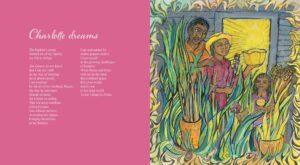 Has Mr. Bryan ever done anything with slavery before? I was curious. I’ve watched Mr. Bryan’s books over the years and they are always interesting. He’s done spirituals as cut paper masterpieces. He’s originated folktales as lively and quick as their inspirational forbears. He makes puppets out of found objects that carry with them a feeling not just of dignity, but pride. But has he ever directly done a book that references slavery? So I examined his entire repertoire, from the moment he illustrated Black Boy by Richard Wright to Susan Cooper’s Jethro and the Jumbie to Ashley Bryan’s African Folktales, Uh-Huh and beyond. His interest in Africa and song and poetry knows no bounds, but never has he engaged so directly with slavery itself.
Has Mr. Bryan ever done anything with slavery before? I was curious. I’ve watched Mr. Bryan’s books over the years and they are always interesting. He’s done spirituals as cut paper masterpieces. He’s originated folktales as lively and quick as their inspirational forbears. He makes puppets out of found objects that carry with them a feeling not just of dignity, but pride. But has he ever directly done a book that references slavery? So I examined his entire repertoire, from the moment he illustrated Black Boy by Richard Wright to Susan Cooper’s Jethro and the Jumbie to Ashley Bryan’s African Folktales, Uh-Huh and beyond. His interest in Africa and song and poetry knows no bounds, but never has he engaged so directly with slavery itself.
Could this have been done as anything but poetry? Or would you even call each written section poetry? I would, but I’ll be interested to see where libraries decide to shelve the book. Do you classify it as poetry or in the history section under slavery? Maybe, for all that it seems to be the size and shape of a picture book, you’d put it in your fiction collection. Wherever you put it, I am reminded, as I read this book, of Good Masters! Sweet Ladies! where every lord and peasant gets a monologue from their point of view. Freedom Over Me bears more than a passing similarity to Good Masters. In both cases we have short monologues any kid could read aloud in class or on their own. They are informed by research, and their scant number of words speak to a time we’ll never really know or understand fully. And how easy it would be to turn this book into a stage play. I can see it so easily. Imagine if you turned the Author’s Note into the first monologue and Ashley Bryan his own character (behold the 10-year-old dressed up as him, mustache and all). Since the title of the book comes from the spiritual “Oh, Freedom!” you could either have the kids sing it or play it in the background. And for the ending? A kid playing the lawyer or possibly Mrs. Fairchilds or even Ashley comes out and reads the statement at the end with each person and their price and the kids step forward holding some object that defines them (clothing sewn, books read, paintings, etc.). It’s almost too easy.
 The style of the art was also interesting to me. Pen, ink, and watercolors are all Mr. Bryan (who is ninety-two years of age, as of this review) needs to render his people alive. I’ve see him indulge in a range of artistic mediums over the years. In this book, he begins with an image of the estate, an image of the slaves on that estate, and then portraits and renderings of each person, at rest or active in some way. “Peggy” is one of the first women featured, and for her portrait Ashley gives her face whorls and lines, not dissimilar to those you’d find in wood. This technique is repeated, to varying degrees, with the rest of the people in the book. First the portrait. Then an image of what they do in their daily lives or dreams. The degree of detail in each of these portraits changes a bit. Peggy, for example, is one of the most striking. The colors of her skin, and the care and attention with which each line in her face is painted, make it clear why she was selected to be first. I would have loved the other portraits to contain this level of detail, but the artist is not as consistent in this regard. Charlotte and Dora, for example, are practically line-less, a conscious choice, but a kind of pity since Peggy’s portrait sets you up to think that they’ll all look as richly detailed and textured as she.
The style of the art was also interesting to me. Pen, ink, and watercolors are all Mr. Bryan (who is ninety-two years of age, as of this review) needs to render his people alive. I’ve see him indulge in a range of artistic mediums over the years. In this book, he begins with an image of the estate, an image of the slaves on that estate, and then portraits and renderings of each person, at rest or active in some way. “Peggy” is one of the first women featured, and for her portrait Ashley gives her face whorls and lines, not dissimilar to those you’d find in wood. This technique is repeated, to varying degrees, with the rest of the people in the book. First the portrait. Then an image of what they do in their daily lives or dreams. The degree of detail in each of these portraits changes a bit. Peggy, for example, is one of the most striking. The colors of her skin, and the care and attention with which each line in her face is painted, make it clear why she was selected to be first. I would have loved the other portraits to contain this level of detail, but the artist is not as consistent in this regard. Charlotte and Dora, for example, are practically line-less, a conscious choice, but a kind of pity since Peggy’s portrait sets you up to think that they’ll all look as richly detailed and textured as she.
Those old photographs I once collected may well be the only record those people left of themselves on this earth, aside from a name in a family tree and perhaps on a headstone somewhere. So much time has passed since July 5, 1828 that it is impossible to say whether or not the names on Ashley’s acquired Appraisement are remembered by their descendants. Do families still talk about Jane or Qush? Is this piece of paper the only part of them that remains in the world? It may not have been the lives they led, but Ashley Bryan does everything within his own personal capacity to keep these names and these people alive, if just for a little longer. Along the way he makes it clear to kids that slaves weren’t simply an unfortunate mass of bodies. They were architects and artists and musicians. They were good and bad and human just like the rest of us. Terry Pratchett once wrote that sin is when people treat other people as objects. Ashley treats people as people. And times being what they are, here in the 21st century I’d say that’s a pretty valuable lesson to be teaching our kids today.
On shelves September 13th.
Source: Galley sent from publisher for review.
Like This? Then Try:
Professional Reviews: A star from Kirkus
Misc: Interested in the other books Mr. Bryan has written or illustrated over the course of his illustrious career? See the full list on his website here.


By:
Betsy Bird,
on 3/1/2016
Blog:
A Fuse #8 Production
(
Login to Add to MyJacketFlap)
JacketFlap tags:
Reviews,
picture books,
Simon and Schuster,
Atheneum,
Best Books,
Evan Turk,
Best Books of 2016,
2016 picture books,
2016 reviews,
Reviews 2016,
original folktale,
Add a tag
 The Storyteller
The Storyteller
By Evan Turk
Atheneum (an imprint of Simon & Schuster)
$24.99
ISBN: 9781481435185
Ages 4-8
On shelves June 28th
Credit the internet age for doing what the television age never could. I don’t know if you’ve noticed, but there is a movement around the world that can be interpreted as nothing so much as a direct response to our digital age. You may have noticed it in small things, like the rise of Steampunk or the sudden surge of interest in Maker stations and the kinds of “hacking” that look suspiciously similar to activities found in shop class in days of yore. All this comes about because people have come to believe that we do not create enough tangible objects in our day-to-day lives anymore. And while this is true, let us not forget that we do not create enough intangible objects either. I’m talking about storytelling, that ancient artform that is currently seeing a worldwide resurgence. It isn’t just the increase in storytelling festivals and podcasts like The Moth here in the States. Young people in countries worldwide are doing what their elders have desired for decades; they’re asking to be told a story. Taking his cues from the newfound interest of young Moroccans in Marrakech in the ancient storytelling tradition, author/illustrator Evan Turk uses the folktale format to craft an original story about storytelling, weaving, history, and language. The end result is a twisty turny story within a story within a story that challenges young readers even as it lures them in.
Once, in the great country of Morocco, storytellers flourished and the cities’ fountains flowed with cool, clear water. As time went on the people became comfortable and forgot about the storytellers, and so they disappeared over the years. So too did the fountains dry up, until one day a boy went looking for some water. What he found instead was an old storyteller. As the man told his tale he would end his story with a story within a story and the boy would find his brass cup filled with liquid. Even as this was happening, however, a desert djinn saw the drought as an opportunity to reclaim the cities that had previously held him back with their fountains. Yet when the djinn was set to level his town, the boy managed to delay him with his storytelling. And as he wove his tale, the people were able to refill their fountains until finally storytelling and water ran freely in the cities once more.
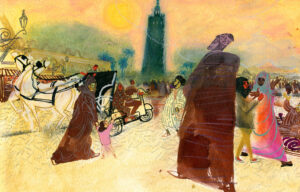 My brain is not what it used to be. Remind me again. What’s that term for a story that tells a story that tells a story that ends only when the innermost story doubles back and each tale is finished in turn? Is there a word such a thing? I suspect that the storytellers amongst us would know. The most obvious similarity to this book that comes to mind is, of course, the tale of Scheherazade. Indeed, the boy uses his stories to trick the djinn. And what could be a more natural comparison? In both tales it is storytelling that proves to be the saving of us all. Our thirst is quenched and we are tied to our history like never before. The obvious question then is whether or not Turk’s text is too complex for kids to follow. Sure, he distinguishes between the tales with different colored fonts, but will that be enough to allow them to remember what came before as they plunge deeper and deeper into the narrative? I think there may be some confusion at work, certainly. I wouldn’t necessarily hand this to a three or four-year-old. However, Turk’s text takes pains to remind the reader where the tale was before. The art helps as well. Confusion, such as it is, will be held to a minimum.
My brain is not what it used to be. Remind me again. What’s that term for a story that tells a story that tells a story that ends only when the innermost story doubles back and each tale is finished in turn? Is there a word such a thing? I suspect that the storytellers amongst us would know. The most obvious similarity to this book that comes to mind is, of course, the tale of Scheherazade. Indeed, the boy uses his stories to trick the djinn. And what could be a more natural comparison? In both tales it is storytelling that proves to be the saving of us all. Our thirst is quenched and we are tied to our history like never before. The obvious question then is whether or not Turk’s text is too complex for kids to follow. Sure, he distinguishes between the tales with different colored fonts, but will that be enough to allow them to remember what came before as they plunge deeper and deeper into the narrative? I think there may be some confusion at work, certainly. I wouldn’t necessarily hand this to a three or four-year-old. However, Turk’s text takes pains to remind the reader where the tale was before. The art helps as well. Confusion, such as it is, will be held to a minimum.
I first knew of Turk’s work when he illustrated Bethany Hegedus’s Grandfather Gandhi. In that book he integrated real spun cotton threads into the art, knowing full well the importance spinning had to Gandhi and his followers. In this book, weaving is the craft of choice so I wondered, not without reason, if woven threads would make their way into the art. As it happens, there are plenty of water-soluble crayons, colored drawing pencils, inks, indigo, sugared green tea, and even art created by heat gun and fire in the illustrations, but nothing so simple as thread. Turk mentions this on his publication page and he puts a little note to the reader there as well. It reads, “Look for a blue glimmer of hope to appear around each story!” and a small blue diamond appears. Naturally, I was curious so I looked. Sure as shooting, after each story’s text a diamond appears. However, as the stories appear within stories within stories, the diamonds grow more elaborate and decorative. Then, as the stories end one by one, the diamonds simplify once more. I began searching the art for more diamonds and here Turk doesn’t disappoint. If you look closely at the borders of the book, you see that the diamonds appear when there is hope and fade from blue to brown diamonds when hope dries up. As the storytelling increases the borders fill in more and more blue, just as the townspeople fill their fountains with bowl after bowl of water. Point out to a child reader the diamond motif and you are sure to be surprised by all that they find hidden in these pages.
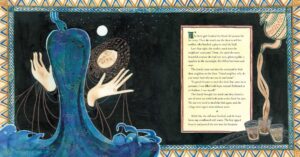 I should probably say something about Turk’s art itself. When I reviewed Grandfather Gandhi I had difficulty putting into words precisely what Turk does with his images. So I looked at the book’s professional reviews. His art causes reviewers to use terms like “dynamic visuals”, “stylized” and “strikingly patterned”. They say his art displays “bold, expressive imagery” or that he “mixes carefully detailed renderings with abstracted expressions of emotional struggle.” I agree with all of that but no one mentions his faces and hands. The patterns here are striking and upon closer inspection they yield such marvelous details it wouldn’t take much for this art to spin wildly out of control, opting for an abstract approach to the proceedings as a whole. Instead, Turk centers his art through the hands and faces of his characters. Look closely and you’ll see what I mean. The old storyteller’s hands are gnarled and wonderfully expressive, even as his audience of one clutches a single brass bowl. The hands of a cunning neighbor stroke her child as she schemes, while a princess, escaping on the night before her wedding, holds up her hennaed hands in despair. Hands. Heads. Hearts.
I should probably say something about Turk’s art itself. When I reviewed Grandfather Gandhi I had difficulty putting into words precisely what Turk does with his images. So I looked at the book’s professional reviews. His art causes reviewers to use terms like “dynamic visuals”, “stylized” and “strikingly patterned”. They say his art displays “bold, expressive imagery” or that he “mixes carefully detailed renderings with abstracted expressions of emotional struggle.” I agree with all of that but no one mentions his faces and hands. The patterns here are striking and upon closer inspection they yield such marvelous details it wouldn’t take much for this art to spin wildly out of control, opting for an abstract approach to the proceedings as a whole. Instead, Turk centers his art through the hands and faces of his characters. Look closely and you’ll see what I mean. The old storyteller’s hands are gnarled and wonderfully expressive, even as his audience of one clutches a single brass bowl. The hands of a cunning neighbor stroke her child as she schemes, while a princess, escaping on the night before her wedding, holds up her hennaed hands in despair. Hands. Heads. Hearts.
There’s been a lot of discussion lately about diversity in children’s literature. Specifically, some of that discussion has concerned those books written by white people about other cultures. It’s not a new phenomenon but what is a bit new is the increasing understanding that if you are going to use another culture, you need to do your homework. If, for example, you are setting a story in Morocco, then you need to make the readers understand why you made that choice. That it wasn’t arbitrary. This is yet another of the many reasons I’m so impressed with Turk’s work here. That he sets his story in Morocco (contemporary Morocco, by the look of it) is deeply purposeful. The Author’s Note at the end explains further. From this we learn that Morocco’s public storytellers or hlaykia have told tales for “nearly one thousand years” and yet “Only a handful of master storytellers remain”. All is not lost, though. Renewed interest in storytelling has surfaced, specifically at a restaurant called Café Clock in Marrakech. Turk then closes with a small Bibliography of sources on everything from storytelling to carpet weaving. The book then is not an appropriation of an “exotic” culture done on a whim but rather a considered, thoughtful selection that serves as an ideal setting for a tale about storytelling then, now, and in the future.
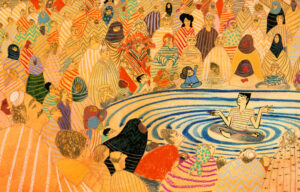 It was once part of a children’s librarian’s training to know how to tell a story from memory. Here in America it was even considered part of a children’s librarian’s heritage, though in the last few decades it has been fast forgotten. There are still pockets that remember, though. That’s why books like Turk’s give me the oddest little sense of hope. As I mentioned before, storytelling everywhere is seeing renewed interest. It seems odd to say, but this book, wrapped as it is in classic motifs and themes dating back hundreds, even thousands, of years, is one of the freshest, most timely picture books I’ve had the honor to read in a long time. Visually stunning with a storyline to match, Turk is beginning to make good on his talents. This is a man with storytelling in his blood and bones. Our children reap the rewards. A can’t miss book.
It was once part of a children’s librarian’s training to know how to tell a story from memory. Here in America it was even considered part of a children’s librarian’s heritage, though in the last few decades it has been fast forgotten. There are still pockets that remember, though. That’s why books like Turk’s give me the oddest little sense of hope. As I mentioned before, storytelling everywhere is seeing renewed interest. It seems odd to say, but this book, wrapped as it is in classic motifs and themes dating back hundreds, even thousands, of years, is one of the freshest, most timely picture books I’ve had the honor to read in a long time. Visually stunning with a storyline to match, Turk is beginning to make good on his talents. This is a man with storytelling in his blood and bones. Our children reap the rewards. A can’t miss book.
On shelves June 28th.
Source: F&G sent from publisher for review.
Like This? Then Try:
- Frederick by Leo Lionni
- Tell Me the Day Backwards by Albert Lamb, ill. David McPhail
- The Girl Who Saved Yesterday by Julius Lester, ill. Carl Angel
Misc:
See more images from the book here.


By: JOANNA MARPLE,
on 3/11/2015
Blog:
Miss Marple's Musings
(
Login to Add to MyJacketFlap)
JacketFlap tags:
editor,
Interview,
SCBWI,
children's books,
publishing,
editing,
Random House,
Viking,
Atheneum,
consultant,
Janet Schulman,
Diane deGroat,
mentors,
Simon & Schuster,
Margaret K. McElderry,
Deborah Brodie,
Rana DiOrio,
Ole Risom,
Little Pickle Press,
Emma D Dryden,
Regina Hayes,
5th anniversary,
Jazan Higgins,
Linda Hayward,
McElderry Books,
Time Traveler Tours & Tales,
WHAT DOES IT MEAN TO BE AN ENTREPRENEUR?,
Add a tag
Emma D. Dryden is a children’s editorial & publishing consultant with drydenbks LLC, a company she established 5 years ago today, after 25 years as a publisher and editor with major publishing houses. I had the privilege of working with … Continue reading →

By:
Betsy Bird,
on 6/12/2014
Blog:
A Fuse #8 Production
(
Login to Add to MyJacketFlap)
JacketFlap tags:
Reviews,
picture book,
picture books,
Simon and Schuster,
Atheneum,
Best Books,
funny picture books,
picture book readalouds,
Best Books of 2014,
Reviews 2014,
2014 picture book readalouds,
2014 picture books,
2014 reviews,
Add a tag
 Hug Machine
Hug Machine
By Scott Campbell
Atheneum (an imprint of Simon & Schuster)
$16.99
ISBN: 978-1-4424-593509
Ages 3-7
On shelves August 26th
Do you remember that old Shel Silverstein poem “Hug O’ War”? This may be considered sacrilege but did you ever notice how the guy could do something brilliant one moment, like “Sister For Sale” and then turn around and do something just doggone maudlin like “Hug O’ War” the next? Here’s a taste of what I mean: “Where everyone hugs / Instead of tugs / Where everyone giggles / And rolls on the rug”. You get the picture. The trouble is that hugs are hard. Adults love ‘em. Kids love ‘em. But writing about them inevitably drops you into sad saccharine territory where even great men like Silverstein find themselves inextricably mired in goo. It takes a sure and steady hand to navigate such territory. For that reason I think you need to take a close look at what Scott Campbell’s done with Hug Machine. There’s nothing wrong with writing a sweet picture book so long as it’s smart and/or funny. It’s harder than just pouring sugar in there and hoping people go along for the ride, which may explain why the market is glutted with schmaltz. Forget the “cute” picture books that make obvious overtures for your heartstrings. Opt instead for something that comes by its adorableness honestly. Hug Machine, man. It’s just the best.
Just call this kid a hugaphiliac. If there’s something out there he can wrap his arms around, he’s going to hug it. In fact, he’s so incredibly good at hugging that he has dubbed himself a “Hug Machine”. “No one can resist my unbelievable hugging,” says he, and he’s right. And what does the Hug Machine do on an average day? Well, it might hug everyone on the street. It might hug animals that are easy (turtles) and animals that are hard (porcupines). What does it eat? Pizza. And what does it hug? Everything! But when the day is done and the Hug Machine can hug no more, it takes a special set of arms to get the Hug Machine back in business again.
Some folks just take to the picture book form like a duck to water. I wish I could say that every cartoonist out there has the knack, but it just ain’t so. Many’s the time I’ve picked up a book from an artist I admired, hoping against hope that the transfer from adult to children’s books was seamless, only to find they just didn’t have what it took to speak to the small fry. Now the nice thing about Scott Campbell is that he’s sort of eased his way into the form. Under the name “Scott C.” he has penned many a grand book for grown-ups, like The Great Showdowns. Now we see his picture book authorial debut in Hug Machine. The verdict? I’m happy to report that all is well and right with the world. Here is a man who knows how to pack humor and heart all within a scant 40 pages.
This isn’t Campbell’s first time at the rodeo, of course. The man has tackled the wide and wonderful world of picture books before. If he wasn’t drawing romance stricken zombies on the one hand (Kelly DiPucchio’s Zombie in Love) then it was Bob Dylan lyrics (If Dogs Run Free) or, my personal favorite, dragons with conflict resolution issues (Robyn Eversole’s East Dragon, West Dragon). What do these all have in common? Probably just the simple fact that Campbell was doing the art on these books. Not the writing. And in at least one or two cases the art clearly outshone the texts. So how does he fare when he’s doing his own book? Magnificently, I’m happy to report. Because while I loved the art here, it was the text that made it work. Consider, for example, the section where The Hug Machine (there really isn’t any better term for him) encounters a porcupine. The porcupine laments, “I am so spiky. No one ever hugs me.” Turn the page and the boy has outfitted himself in a catcher’s mask, pillow on the middle, and oven mitts. The text reads, “They are missing out!” It is a wonderful phrase and not one you’d necessarily expect to see in a picture book. For whatever reason it reminded me of the wonderful wordplay of fellow picture book author/illustrator Bob Shea. To my mind it takes a special kind of talent to pluck just the right words out of the ether and to apply them at the perfect moment.
I mentioned earlier that Campbell, under the name of “Scott C.” created such amusing fare as The Great Showdowns. A bit of that aesthetic comes to mind when you check out the endpapers of this book. It necessitated an explanation to my three-year-old about what exactly a checklist is. You see, on the front endpapers of Hug Machine you see a range of different characters, each next to a little box. Turn to the back of the book and on these endpapers each character has been checked off. A child reader could easily spend hours matching each character to its appearance in the book. By the same token, kids could also have a great deal of fun just counting the number of hugs in this book in total.
I’ve little doubt that there will be an adult out there who is disturbed by the notion of a kid hugging complete strangers. I would point out, though, that we don’t actually know whether or not the people he’s hugging are strangers or not. For all we know he lives in a small town and is knows every person’s name, from the picnickers to the joggers to the construction workers. And that pretty much encapsulates any possible objections I could possibly find to the book. It would be an ideal readaloud for storytime (I’m jealous of the librarians and booksellers who will get to use it) to say nothing of reading it one-on-one. A real keeper. Share it with your own resident hug machine today.
For ages 3-6.
On shelves August 26th
Source: Galley sent from publisher for review.
Like This? Then Try:
Professional Reviews:
Other Reviews: The Early Career Committee of CBC


By:
Betsy Bird,
on 4/8/2014
Blog:
A Fuse #8 Production
(
Login to Add to MyJacketFlap)
JacketFlap tags:
Best Books of 2014,
Reviews 2014,
2014 reviews,
2014 biographies,
2014 nonfiction,
2015 Sibert contender,
2015 Caldecott contender,
Arun Gandhi,
Evan Turk,
Reviews,
nonfiction,
nonfiction picture books,
biographies,
Simon and Schuster,
Atheneum,
Best Books,
picture book biographies,
Bethany Hegedus,
Add a tag
 Grandfather Gandhi
Grandfather Gandhi
Arun Gandhi and Bethany Hegedus
Illustrated by Evan Turk
Atheneum (an imprint of Simon and Schuster)
$17.99
ISBN: 978-1-4424-2365-X
Ages 4-8
On shelves now.
Are you familiar with the concept of booktalking? It’s a technique librarians developed to get people interested in books they might otherwise not pick up. The whole concept is to develop a kind of movie trailer style talk that gives a sense of the book’s allure without giving up the plot. Typically booktalking is done for middle grade and young adult works of fiction, but enterprising souls have had a lot of luck with nonfiction as well. Now with an increased interest in nonfiction in our schools it’s more important than ever to make the books we hawk sound particularly good. It doesn’t hurt matters any when the books actually ARE good, though. Now let’s say I’m standing in front of a room of second and third graders with a copy of Grandfather Gandhi in my hands. How do I sell this book to them? Easy peasy. Some books practically booktalk themselves. Here’s how you sell it:
“Have any of you ever heard of Einstein? Yes? He’s the guy that was a total genius. Now imagine you’re his grandkid and you’re not that smart. Okay now, have any of you heard of the Beatles. Yes? Well imagine you’re one of THEIR grandkids . . . and you’re bad at music. Now here’s the big one. Has anyone heard of Gandhi? He was a great guy. He managed to free his country and stop a lot of oppression and he did it without any violence at all. Martin Luther King Jr. got some of his ideas from Gandhi about nonviolence. All right, well, now let’s image you are Gandhi, the most peaceful man IN THE WORLD’s grandson. What if you get mad? Can you imagine what it would be like to have everyone whispering every time you got a little steamed about something?”
So there you go. Quick. Simple. To the point. I’ve met a fair number of picture book memoirs in my day, but Grandfather Gandhi may well be my favorite. Smartly written with an unusual hook and art that will just knock your socks off, this is one title you are going to have to see firsthand for yourself.
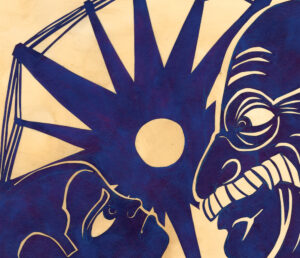 When young Arun and his family first arrive in his grandfather Mahatma Gandhi’s village, he’s mighty shy around his incredibly famous relative. Yet right away Grandfather is warm and welcoming to them, and when he praises Arun for walking the distance from the train station the boy swells with pride. Unfortunately, having Gandhi as your grandpa means having to share him with the 350 followers who also live in the village. Arun struggles with his lessons in Gujarati and the fact that there are no movie theaters around, but there are upsides to village life too. He’s pretty good at soccer with the other kids, and occasionally Grandfather will take him for a walk just mano a mano. But then, one fateful day, Arun gets into a skirmish on the soccer field and his anger is overwhelming. Shamed that the grandson of Gandhi himself would react in anger he confesses to his Grandfather immediately, only to find the man isn’t angry or disappointed in him in the least. Anger, Gandhi explains, is like lightning. You can use it to destroy or you can use it to light the world, like a lamp. Which will you choose?
When young Arun and his family first arrive in his grandfather Mahatma Gandhi’s village, he’s mighty shy around his incredibly famous relative. Yet right away Grandfather is warm and welcoming to them, and when he praises Arun for walking the distance from the train station the boy swells with pride. Unfortunately, having Gandhi as your grandpa means having to share him with the 350 followers who also live in the village. Arun struggles with his lessons in Gujarati and the fact that there are no movie theaters around, but there are upsides to village life too. He’s pretty good at soccer with the other kids, and occasionally Grandfather will take him for a walk just mano a mano. But then, one fateful day, Arun gets into a skirmish on the soccer field and his anger is overwhelming. Shamed that the grandson of Gandhi himself would react in anger he confesses to his Grandfather immediately, only to find the man isn’t angry or disappointed in him in the least. Anger, Gandhi explains, is like lightning. You can use it to destroy or you can use it to light the world, like a lamp. Which will you choose?
I think it’s fair to say that there have been a fair number of children’s picture books from family and relatives of famous peacemakers. Most notable would be Martin Luther King Jr.’s clan, where it sometimes seems like every son, daughter, niece, and nephew has his or her own spin on their infinitely famous relative. Gandhi’s a bit different. One wouldn’t expect his own descendants to have much in the way of access to the American publishing industry, so biographies of his life in picture book form have concentrated occasionally on his life and occasionally on The Great Salt March. When I saw that this book was co-authored by his fifth grandson I expected the same sort of story. A kind of mix of “this guy was fantastic” with “and I knew him!”. Instead, Hegedus and Gandhi have formulated a much more accessible narrative. Few children can relate to having a famous relative. But what about controlling their anger in the face of injustice? What’s fascinating about this book is that the authors have taken a seemingly complex historical issue and put it into terms so child-friendly that a five-year-old could get the gist of it. That Gandhi’s anger went on to become what spurned him to make lasting, important changes for his people is the key point of the book, but it takes a child’s p.o.v. to drill the issue home.
 Above and beyond all that, this is a book that advocates quite strongly for peace in all its myriad forms. Hardly surprising when you consider the subject matter but just the same I sometimes feel like “peace” is one of those difficult concepts without a proper picture book advocate. I went to a Quaker college where PAGS (Peace and Global Studies) was a popular major, and it was in making Quaker friends that I learned about picture books dedicated to the concepts embraced by that particular religion. Books like The Story of Ferdinand by Munro Leaf, The Table Where Rich People Sit by Byrd Baylor, Thy Friend, Obadiah by Brinton Turkle, and more. I’m sure that many is the Quaker household, or really any household that believes that peace is a practical and attainable solution, that will embrace Grandfather Gandhi as one of their own.
Above and beyond all that, this is a book that advocates quite strongly for peace in all its myriad forms. Hardly surprising when you consider the subject matter but just the same I sometimes feel like “peace” is one of those difficult concepts without a proper picture book advocate. I went to a Quaker college where PAGS (Peace and Global Studies) was a popular major, and it was in making Quaker friends that I learned about picture books dedicated to the concepts embraced by that particular religion. Books like The Story of Ferdinand by Munro Leaf, The Table Where Rich People Sit by Byrd Baylor, Thy Friend, Obadiah by Brinton Turkle, and more. I’m sure that many is the Quaker household, or really any household that believes that peace is a practical and attainable solution, that will embrace Grandfather Gandhi as one of their own.
It’s been a long time since I ran across a picture book with as long and lengthy a list of materials used in the illustrations as I have here. On the publication page it reads, “The illustrations for this book are rendered in watercolor, paper collage, cotton fabric, cotton, yarn, gouache, pencil, tea, and tin foil. Cotton hand spun on an Indian book charkha by Eileen Hallman.” Phew! You might think that all that “stuff” might yield something clogged up or messy, but that would be doing Mr. Turk a disservice. Observing how well he gives his pictures depth and texture, life and vitality, you might be shocked to learn that Grandfather Gandhi is his first picture book. From the spinning wheel endpapers to montages of sheer explosive anger, Turk makes a point of not only adhering to some of the more metaphorical aspects of the text, but finding new and creative ways to bring them to visual life. To my mind, the materials an artist uses in his or her art must, in the case of mixed media, have a reason for their existence. If you’re going to use “cotton fabric, cotton” and “yarn” then there should be a reason. But Turk clearly did his homework prior to doing the art on this book. He doesn’t just slap the images together. He incorporates the fibers Gandhi knew so well and turns them into an essential aspect of the book’s art. The art doesn’t just support the text here. It weaves itself into the story, becoming impossible to separate from the story.
 It’s Arun’s anger that proved to be the most visually interesting aspect, to me, in the book. Turk deftly contrasts the calm white thread produced by Gandhi’s spinning with the tangled black ones that surround and engulf his grandson whenever his feelings threaten to break free. The scene where he’s tempted to throw a rock at the boy who shoved him down is filled with thread, Arun’s magnificently clenched teeth, and black shadow figures that reach out across the field to the soccer net, dwarfing the three other little figures below. Later you can see the negative space found in cut paper turning from a representation of lightning into a thread of cotton in the hands of Gandhi illuminating a passage about making your anger useful. Yet Turk doesn’t just rely on clever techniques. He’s remarkably skilled at faces too. Arun’s expressions when he gets to see his grandfather alone or makes him proud are just filled with wide-eyed eager hope. And his frustrations and anger pulse off the page from his features alone.
It’s Arun’s anger that proved to be the most visually interesting aspect, to me, in the book. Turk deftly contrasts the calm white thread produced by Gandhi’s spinning with the tangled black ones that surround and engulf his grandson whenever his feelings threaten to break free. The scene where he’s tempted to throw a rock at the boy who shoved him down is filled with thread, Arun’s magnificently clenched teeth, and black shadow figures that reach out across the field to the soccer net, dwarfing the three other little figures below. Later you can see the negative space found in cut paper turning from a representation of lightning into a thread of cotton in the hands of Gandhi illuminating a passage about making your anger useful. Yet Turk doesn’t just rely on clever techniques. He’s remarkably skilled at faces too. Arun’s expressions when he gets to see his grandfather alone or makes him proud are just filled with wide-eyed eager hope. And his frustrations and anger pulse off the page from his features alone.
Picture books for kids about dealing with their anger tend towards the fictional. There’s Molly Bang’s When Sophie Gets Angry . . . Really Really Angry and Robie H. Harris’s The Day Leo Said, “I Hate You”. These are two of the good ones. Others veer towards the preachy and paternalistic. Imagine if you started using something like Grandfather Gandhi instead. More than just a memoir, the book offers a broad look at the benefits of channeling your anger. Better still, it’s a true story. Kids respect the true. They’ll also respect young Arun and his uncomfortable position. Fair play to author Bethany Hegedus for hearing him speak more than 13 years ago about this moment in his life, knowing that not only was there a picture book story to be had here, but a lesson kids today can grasp. As she says in her “Note from the Authors” at the end, “We world we live in needs to heal – to heal from the wars that are fought, to the bullying epidemic, to mass killings by lone gunmen, to poverty, to hunger, and to issues that contribute to internal anger being outwardly expressed in violent actions.” Gandhi’s message never grows old. Now we’ve a book that helps to continue his work for the youngest of readers. A necessary purchase then.
On shelves now.
Source: Final copy sent from publisher for review.
Like This? Then Try:
Other Blog Reviews:
Professional Reviews:
Interviews:
- ReaderKidZ speaks with Ms. Hegedus about the book.
- Meanwhile Kirkus interviewed the two authors and the illustrator here.
Misc: This is a book with a very nicely maintained and updated website of its own. Some of my favorite posts include this one from Evan Turk on how he got access to the spun cotton fiber featured in the book. I also light his piece on Light & Shadow and this one on how he chose his art. Arun even has posts up containing family Gandhi stories that would make an excellent follow up books should the need arise. Be sure to read the one on pumpkins and eggs when you get a chance.
Video:
One of the top best book trailers I’ve seen in a really long time. Accomplished and it does a brilliant job of highlighting Turk’s art.
llustration & Animation by Evan Turk
Voices: Arun Gandhi & Bethany Hegedus


By:
Betsy Bird,
on 5/10/2012
Blog:
A Fuse #8 Production
(
Login to Add to MyJacketFlap)
JacketFlap tags:
Uncategorized,
dragons,
Simon and Schuster,
Atheneum,
picture book reviews,
Scott Campbell,
2012 picture books,
2012 reviews,
Robyn Eversole,
Add a tag
 East Dragon, West Dragon
East Dragon, West Dragon
By Robyn Eversole
Illustrated by Scott Campbell
Atheneum Books (an imprint of Simon & Schuster)
$16.99
ISBN: 978-0-689-85828-4
Ages 4-8
On shelves now
Sometimes the obvious can also be the impossible. Take dragons, for example. Now say you’re a children’s librarian and a five-year-old approaches your desk and asks you for “a dragon story”. And not one of those two-bit cheapo dragon titles either. Nuh-uh. An honest-to-goodness straight up dragon tale with scales and fire and knights. The whole shebang. Now logically, what with dragons being this eternal bit of subject matter that’s just as popular with the kids now as they were 100 years ago, you should be able to instantly name ten great dragon picture books off the top of your head. Maybe you can too. Maybe you’re particularly gifted in that way. For my part, though, it’s hard to think of iconic dragon-related picture books. The Reluctant Dragon? A great story but a bit long for a tot. The Knight and the Dragon? Wonderful but wordless. The Paper Bag Princess? Awesome story but can we work that word “dragon” into the title somewhere? No, as ridiculous as this may sound it can be really hard to think up dragon stories. The idea that you might give one to the kid that contains not one but TEN cool looking dragons alongside a fun story, an acknowledgement that dragons mean different things in different cultures, plenty of action and plenty of humor . . . well basically just sign me up for some of that! In East Dragon, West Dragon, author Robyn Eversole and illustrator Scott Campbell give kids and adults alike something we have needed, whether we knew it or not, for a very long time.
Our two heroes in this story are East Dragon and West Dragon. East Dragon is our Felix and West Dragon our Oscar. While East Dragon lives a clean and tidy life with lots of dragon siblings and an emperor who truly appreciates dragon culture, West Dragon lives a single messy life dealing with a pesky local king and his equally pesky knights. The two dragons know of one another but each is sure that the other is the more fearsome of the two. One day, West Dragon can’t take the marauding knights a second longer (they interrupted his nap) so he gives them a map that will lead them to adventures. In their travels they run across the emperor who is extremely nice and offers them all his hospitality. Yet what do the pesky knights do in return? They take one look at the local dragon population and attack! Not thrilled at his rude guests, the emperor has the whole lot of them thrown into prison. West Dragon, hearing of their plight, resigns himself to saving them and along the way encounters (and is himself saved by) East Dragon. After much thought the two realize that neither dragon is any better than the other and the dragons, knights, and even the emperor himself all head over the sea to West Dragon’s place for food, fun, and maybe even a little karaoke.
![East
</p>
<div class=]() 0 Comments on Review of the Day: East Dragon, West Dragon by Robyn Eversole as of 5/10/2012 11:20:00 PM
0 Comments on Review of the Day: East Dragon, West Dragon by Robyn Eversole as of 5/10/2012 11:20:00 PM
 Jazz Age Josephine
Jazz Age Josephine
By Jonah Winter
Illustrated by Marjorie Priceman
Atheneum (an imprint of Simon & Schuster)
$16.99
ISBN: 978-104169-6123-9
Ages 6 and up
On shelves now
When we try to name the biggest and best picture book biography authors out there, two names spring immediately to mind. The first is David Adler. Mr. Adler specializes in picture books that go by the straightforward titles of “A Picture Book of [Enter Name Here]“. It makes him easy to spot on a shelf. All his books look pretty much the same with stories that reduce their subjects to a couple key points. They are serviceable in the best sense of the term. They serve a purpose. They also couldn’t be more different from the works of the great picture book biographer Jonah Winter. Where Mr. Adler is all white borders and straightforward fonts, Mr. Winter’s books leap off the shelf and make a dive for your jugular. They pop and smack and wrest your attention away from the glittery fictional pack. His latest, Jazz Age Josephine, is no different. A witty and glam look at a person rarely seen in picture book bios, Winter uses his storytelling skills to spin the tale of a fine lady, never told in quite this way before.
“Well, she was born up in St. Louis, and she grew up with those St. Louis Blues / Yes, she was born in old St. Louis, and she grew up singin’ nothin’ but the blues, / She just had one old ragged dress and a pair of worn-out old shoes.” That was Josephine Baker back in the day. Fortunately, the kid had pep. She could move and goof off and her dancing was so good that it earned her some money from time to time. Little wonder that when her home was burned by angry racists she headed straight for New York City. There Josephine was able to get some roles on the stage, but the minstrel parts were particularly galling. So off she flew to Paris and once she got there, “Paris, France – instant fame! / Everybody knows her name!” And though she missed her home, she was a jazz age baby and a hit at long last.
I did a cursory check of the reader reviews of this book online and saw that some folks were a bit peeved that Mr. Winter dared to mention hot topic issues like racism and minstrel shows. I think that highlights why it is that this is the first time such a biography for kids has been attempted (there was Ragtime Tumpie by Alan Schroeder in 1989 but that just looked at Josephine’s youth). The story of Ms. Baker is more difficult than your average Rosa Parks / Frederick Douglass bio. If you’re going to talk about Josephine then you have to talk about why she left America. You have to talk about what the state of the country was at that time, and why she felt she couldn’t return there. Then there are other issues as well. For one thing, is it possible to talk about Ms. Baker without mentioning the banana skirt? Winter doesn’t talk about the costume (six-year-olds are notoriously bad at pronouncing the word “burlesque”) but illustrator Marjorie Priceman does include a subtle glimpse of it from the side in two separate pictures. Meanwhile Mr. Winter does a good job of making it clear that Josephine was sad to be away from the States but that to become a star she had to go elsewhere. Interestingly the book ends at about that point, leaving the Author’s Note to explain her work with t
Children beware -- you may not want to leave your sled outside at night. Or maybe you should. A forest creature might snatch the sled up one winter evening, take it for a joy ride and return it with a thanks, leaving only a few tracks outside to tell of the adventure. One can hope!
Lita Judge is one of our newest favorite author/illustrators. She grew up enjoying wintery weather and, according to her latest book, Red Sled, as a child she often wondered about the tracks left behind by the woodland animals. Judging from the animals' expressions in the book it appears she also knows a thing or two of the joys (and perils) of sledding downhill.
 Red Sled is a nearly wordless picture book that shows the events that occur when a child leaves a red sled propped against the side of a home. A bear wanders by, notices the sled and sneaks away with it, scrunch, scrinching through the snow. The bear invites a rabbit friend for a fun, moonlight ride. As the sled flies downhill, other animals pile on one-by-one, gadung, gadunging on the snowy surface together while making gleeful noises. The impromptu sledding party results in smiles shared by all.
Red Sled is a nearly wordless picture book that shows the events that occur when a child leaves a red sled propped against the side of a home. A bear wanders by, notices the sled and sneaks away with it, scrunch, scrinching through the snow. The bear invites a rabbit friend for a fun, moonlight ride. As the sled flies downhill, other animals pile on one-by-one, gadung, gadunging on the snowy surface together while making gleeful noises. The impromptu sledding party results in smiles shared by all.
The illustrations in this endearing book are truly remarkable, from the animals' exuberant expressions to the little boy's wonderment at the tracks found near his sled. My kids giggle with delight at all the silly sledding antics and the faces the animals make. The adorable, bundled-up, red-hatted child reminds us of the classic character in Keats' The Snowy Day. The text consists only of a few joyful utterances and onomatopoeias like "sssssffft" for the sound the sled makes as it glides across the snow. The wordless silence punctuated by random sounds is a perfect textual interpretation of a sledding experience. Judge's Red Sled so beautifully captures the exhilaration of a sledding adventure that you'll want to immediately head to your favorite sledding hill!
Red Sled by Lita Judge. Atheneum Books for Young Readers (November 2011); ISBN 9781442420076; 40 pages
by Lita Judge. Atheneum Books for Young Readers (November 2011); ISBN 9781442420076; 40 pages
Book Source: Copy from public library
Lita Judge spent part of her childhood living with her grandparents in Wisconsin. In an interview with Jules at
Seven Impossible Things before Breakfast she tells how this experience helped partly inspire her to write
Red Sled. There's also an adorable photograph of a grizzly bear she grew up watching (apparently her parents are wildlife photographers).
Related Links:
Lita Judge - Website ❄ ❄ ❄ ❄ Popsicle Stick Sled Craft ❄ ❄ ❄ ❄My kids, like many nowadays, think that all sleds are mad
 Trapped: How the World Rescued 33 Miners from 2,000 Feet Below the Chilean Desert
Trapped: How the World Rescued 33 Miners from 2,000 Feet Below the Chilean Desert
By Marc Aronson
Atheneum Books for Young Readers (an imprint of Simon & Schuster)
$16.99
ISBN: 978-1416913979
Ages 10 and up
On shelves August 30, 2011
The notion that history is always happening isn’t necessarily obvious to a kid. I remember have several moments of revelation when I was younger, realizing time and time again that the folks we studied in school were real. That they walked around like I did. History has a tendency to play out like a movie when you’re young. You might be moved but you wouldn’t necessarily be able to wrap your head around the notion that there but for the grace of God go I. To hammer this notion home it might be advisable to find moments in recent history that have been recorded for all of posterity. Like, say, the Chilean miner incident of 2010. A lot of kids (as of this review) would remember when that was in the news. Yet they might not think of that as a historical incident yet. Enter Trapped by Marc Aronson. Here we have a book that sheds some light on the story that hypnotized the world. With its natural tension and everyday heroes, Trapped is that rarest of nonfiction beasts: A contemporary work of historical fact that has you gripping the edge of your seat.
The collapse of a San Jose mine on August 5, 2010 wasn’t anything the world hadn’t seen before. Mines collapse all the time. It’s a dangerous occupation. The difference here, of course, was the fact that the 33 men trapped 2,300 feet underground were still alive. Suddenly the world was riveted by their story. Would the rescuers be able to find them? And even if they did, how would they get them out? Backmatter to this true tale includes brief biographies of each of the thirty-three miners, a Timeline, a Glossary of Names and Terms, a word on “The World of the Miner” by a miner, a note to students, Notes and Sources, a Bibliography, a list of interviewed subjects, Useful Websites, and an Index.
A good work of nonfiction for kids makes you want to keep reading, even when you know the outcome. When I pick up a book like Amelia Lost by Candace Fleming, I love that I feel like there may be a chance that they’ll find Ms. Earhardt this time. Similarly, when I read Trapped I have to feel like there’s a chance that they won’t rescue the miners this time. Indeed there were several moments when it really seemed as though the miners wouldn’t be found. Aronson parcels out this tension, knowing better than to fill the narrative with foreshadowing or some kind of false narrative technique. And like Fleming’s book he makes sure to tell two different stories at once. We are both with the miners and with the rescuers as the tale unfolds.
 Mr. Aronson is a fan of context. It isn’t enough to know that this story takes place 2,000 feet below the Chilean Desert. He must show you how that desert was formed. And it isn’t enough to simply know that these men were farmers of items like copper. He’s inclined to give you the very hist
Mr. Aronson is a fan of context. It isn’t enough to know that this story takes place 2,000 feet below the Chilean Desert. He must show you how that desert was formed. And it isn’t enough to simply know that these men were farmers of items like copper. He’s inclined to give you the very hist
 Uma Krishnaswami, illustrated by Abigail Halpin
Uma Krishnaswami, illustrated by Abigail Halpin
The Grand Plan to Fix Everything
Atheneum, 2011.
Age: 9+
In her exuberant new book, The Grand Plan to Fix Everything, award-winning writer Uma Krishnaswami uses the novel form itself to deconstruct film-making, especially plot development. In the process she creates layers of plot fun for ‘tween girl readers.
Best friends Maddie and Dini are separated when Dini’s physician mom gets a chance to return to India for two years. Through internet and mobile phone technology and her dad’s computer skills, Dini stays connected to Maddie, back in the States, while she attempts to realize their dream scheme: to meet their idol, Bollywood “fillum” star Dolly Singh. Plot reversals abound, of course, but thanks to a conscientious postal worker, an Indian girl with a talent for sound effects, Dini’s tolerant if clueless parents, a bakery that puts chocolate in curry puffs, a singing electric car, and even a goat-herder, not to mention the characters and crises in Dolly’s career and love life, Dini’s dream of meeting Dolly more than comes true.
Dini knows that there is something mysterious about how everything works out in Dolly’s fillums, but orchestrating to her purposes the characters in Krishnaswami’s fictional Indian hill town, Swapnagiri (Dream Mountain), is a big challenge for an 11-year-old–even after Dini learns that Dolly is staying in the very same town. However precocious and however loyal a fan Dini is, she needs vision, luck, courage, energy—and kismet!—to realize her dream. Patterning herself on Dolly in her fillums, Dini aspires to have everything come out right, every dream come true.
Abigail Halpin‘s humorous black-and-white drawings and cover illustration give just the right amount of visual suggestion to young imaginations. Krishnaswami’s lively plot exudes entertaining references. No mention of Mumbai passes without reference to fillum people who still call the city Bombay, for example. Dini’s puzzlement about a grip’s role on a film becomes an extended joke. Her dad’s penchant for nifty phrases introduces homespun English idioms. As Dini follows Dolly’s musical advice to “Sunno-sunno, dekho-dekho” (listen-listen, look-look), she becomes part of the Swapnagiri community and everything does come out right. Krishnaswami’s brilliant, multilayered book will delight her readers. Younger ones will love the story for itself, while older girls will also appreciate her nuanced message, plot dissection, and linguistic in-jokes.
Charlotte Richardson
June 2011
 I Must Have Bobo!
I Must Have Bobo!
By Eileen Rosenthal
Illustrated by Marc Rosenthal
Atheneum (an imprint of Simon & Schuster)
$14.99
ISBN: 978-1-4424-0377-2
For ages 4-8
On shelves now
Picture books in which beloved toys go astray are the heart and soul of the industry. The reasons are infinitely clear. When dealing with a four-year-old reader, you want to present them with a tale that taps into their insecurities and fears without going overboard. Showing them losing their mom or dad would be WAY too serious for the format, and that goes for the family pet as well. Better to keep it low-key. In this way books like Knuffle Bunny (in all three of its various incarnations) remains a beloved institution. The newest entrant to the field is the beautifully named I Must Have Bobo! by Eileen Rosenthal, illustrated by her husband Marc Rosenthal. Part epic rage against the dying of the light/losing of the toy, part battle of wits between a boy and a cat, Bobo is about the kind of struggle that any preschooler can understand. And while I might have put a different ending on it, when it comes to stuffed monkeys, Bobo is where it’s at.
Willy wakes up one morning to find there’s something wrong. Something, or someONE, missing. Bobo, Willy’s stuffed monkey, is always on hand when the boy needs to go down a scary slide or sneak past a large dog. So where is he now? After a quick investigation it becomes clear that Earl, the family housecat, is the unapologetic Bobo snatcher in question. Thus begins a battle of wits between Willy and Earl as each find and take back the beloved Bobo. Finally, when Earl has proved particularly clever, Willy finds the two on the couch and surprisingly enough envelopes BOTH in a big, affectionate hug.
 It’s a great little readaloud if you’re willing to give it your all. I mean, if you intend to read this to a group of kids then you really have to let you lungs rip with this book. Interestingly, the story begins between a third personal omniscient narrator but after that first sentence of “When Willy woke up, there was trouble” it switches over entirely into Willy’s own dialogue. This means that the reader has to embody Willy and his pain. That first cry of “I must have Bobo!” has to come from the heart or you might lose your audience. Plus it’s a lot of fun to scream. So really, win-win.
It’s a great little readaloud if you’re willing to give it your all. I mean, if you intend to read this to a group of kids then you really have to let you lungs rip with this book. Interestingly, the story begins between a third personal omniscient narrator but after that first sentence of “When Willy woke up, there was trouble” it switches over entirely into Willy’s own dialogue. This means that the reader has to embody Willy and his pain. That first cry of “I must have Bobo!” has to come from the heart or you might lose your audience. Plus it’s a lot of fun to scream. So really, win-win.
 Of course, one thing you really want when you’re reading a picture book aloud to a room of kids is a kicking ending. You want something that’s gonna stop `em dead in their little sneaker-wearing tracks. Good endings to picture books can go the surprise twist route (
Of course, one thing you really want when you’re reading a picture book aloud to a room of kids is a kicking ending. You want something that’s gonna stop `em dead in their little sneaker-wearing tracks. Good endings to picture books can go the surprise twist route (

One season. 10 books.
This was difficult.
After scouring the children’s lit landscape, what follows are the 10 titles set to release in December, January, and February that most caught my eye as a K-6 school librarian. It’s a subjective list, to be sure, and not a collection of surefire winners – just some promising prospects. Here we go…
Middle Grade Fiction

No Passengers Beyond This Point by Gennifer Choldenko
Feb. 8, 2011 | Dial
The Newbery-honor winning author of Al Capone Does My Shirts offers up a departure that I’m looking forward to. A fantasy about three siblings and their journey to Colorado to visit their uncle. Good author, interesting premise – consider my curiosity piqued.
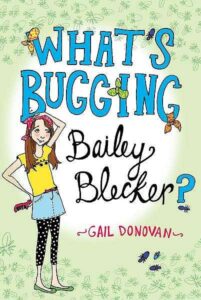
What’s Bugging Bailey Blecker? by Gail Donovan
Feb. 17, 2011 | Dutton
Do we share a similar sense of humor? Let’s find out. I think this story about a 5th grader growing out her hair to donate while dealing with a classroom outbreak of head lice sounds like a comedy gem in the making. What do you think? From the author of In Memory of Gorfman T. Frog.
Nonfiction Picture Books
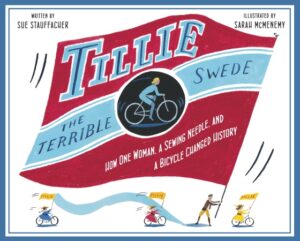
Tillie the Terrible Swede: How One Woman, a Sewing Needle, and a Bicycle Changed History by Sue Stauffacher, illustrated by Sarah McMenemy
Jan. 25, 2011 | Random House
While biographies of well known historical figures are eye-catching, it is often the lesser-known stories that have the biggest impact. The author behind the wonderfully odd Doughnuthead takes on pioneering female cyclist Tillie Anderson. I’m looking forward to the results.
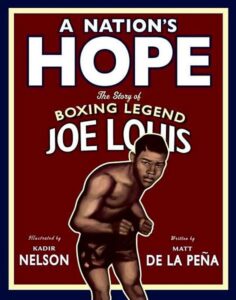
A Nation’s Hope: the Story of Boxing Legend Joe Louis by Matt de la Peña, illustrated by Kadir Nelson
Jan. 20, 2011 | Dial
Speaking of well-known figures, Joe Louis is one of America’s most famous boxers. Last I checked, however, there wasn’t a solid Louis bio for younger readers. With Kadir Nelson handing illustration duties, this one might fit the bill.
Picture Books

Where’s Walrus? by Stephen Savage
A wordless story about a zookeeper’s attempts to capture an escaped walrus, illustrated with about as much charm as you can fit between two covers.
Feb. 1, 2011 | Scholastic Press

Except If by Jim Averbeck
Jan. 25, 2011 | Atheneum
First came the egg, then the chicken. Except if it becomes a dino. Jim Averbeck (In a Blue Room) brings us a story full of possibilities.
![Look! A Bo
</p>
<div class=]() 0 Comments on 10 to Note: Winter Preview 2010-11 as of 1/1/1900
0 Comments on 10 to Note: Winter Preview 2010-11 as of 1/1/1900
 Ghost
Ghost







































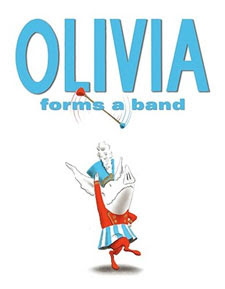



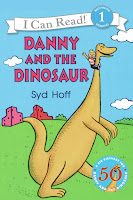
I reviewed this too last month: https://medinger.wordpress.com/2016/07/10/coming-soon-jason-reynolds-ghost/ Zipped to the top of my Newbery goodreads list.
Yes to everything in this review. I cannot wait to put this in the hands of our fifth graders in a few weeks.
Yes, Yes, and and even bigger YES if that’s even possilble.
[…] Ghost review […]